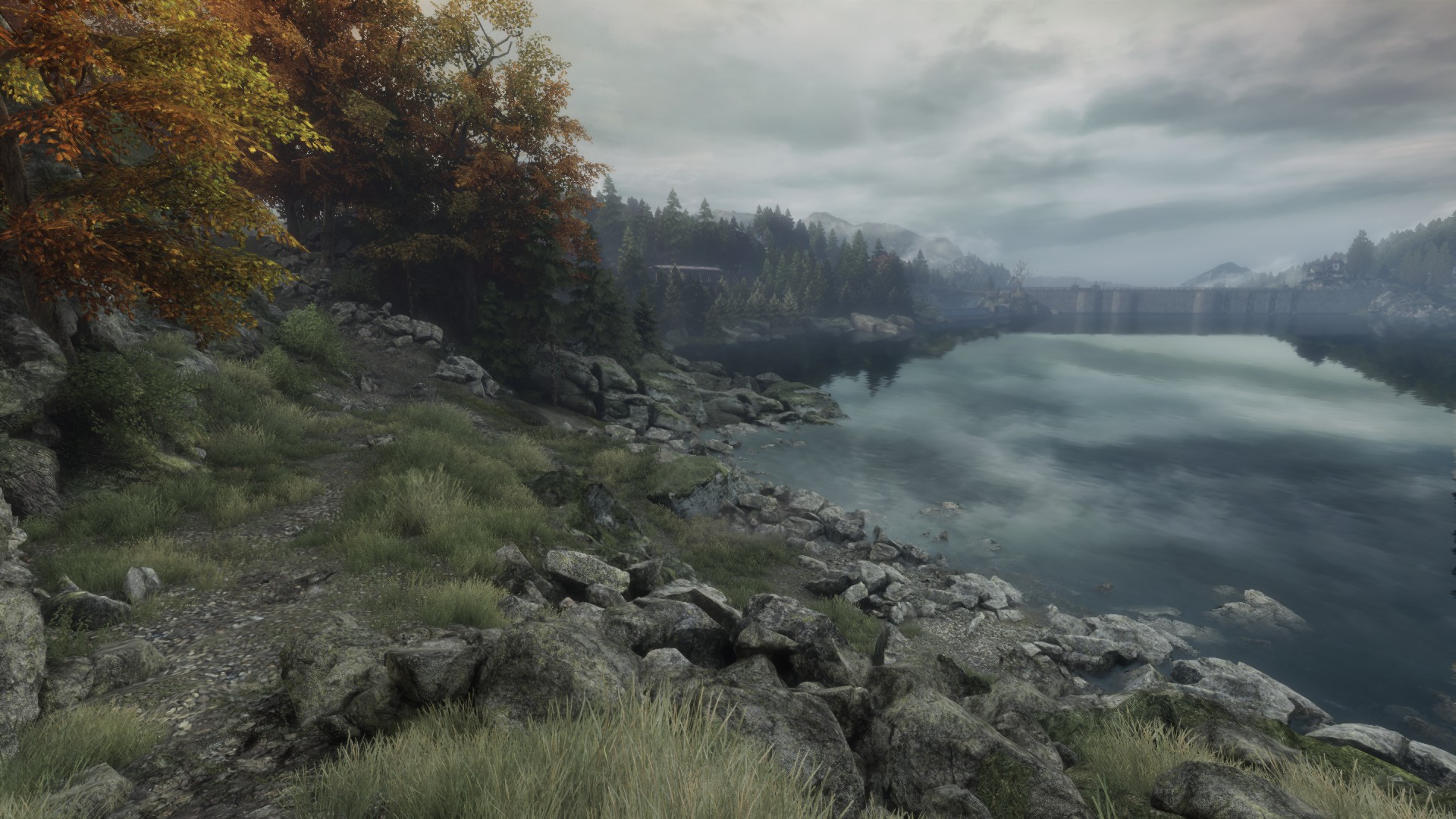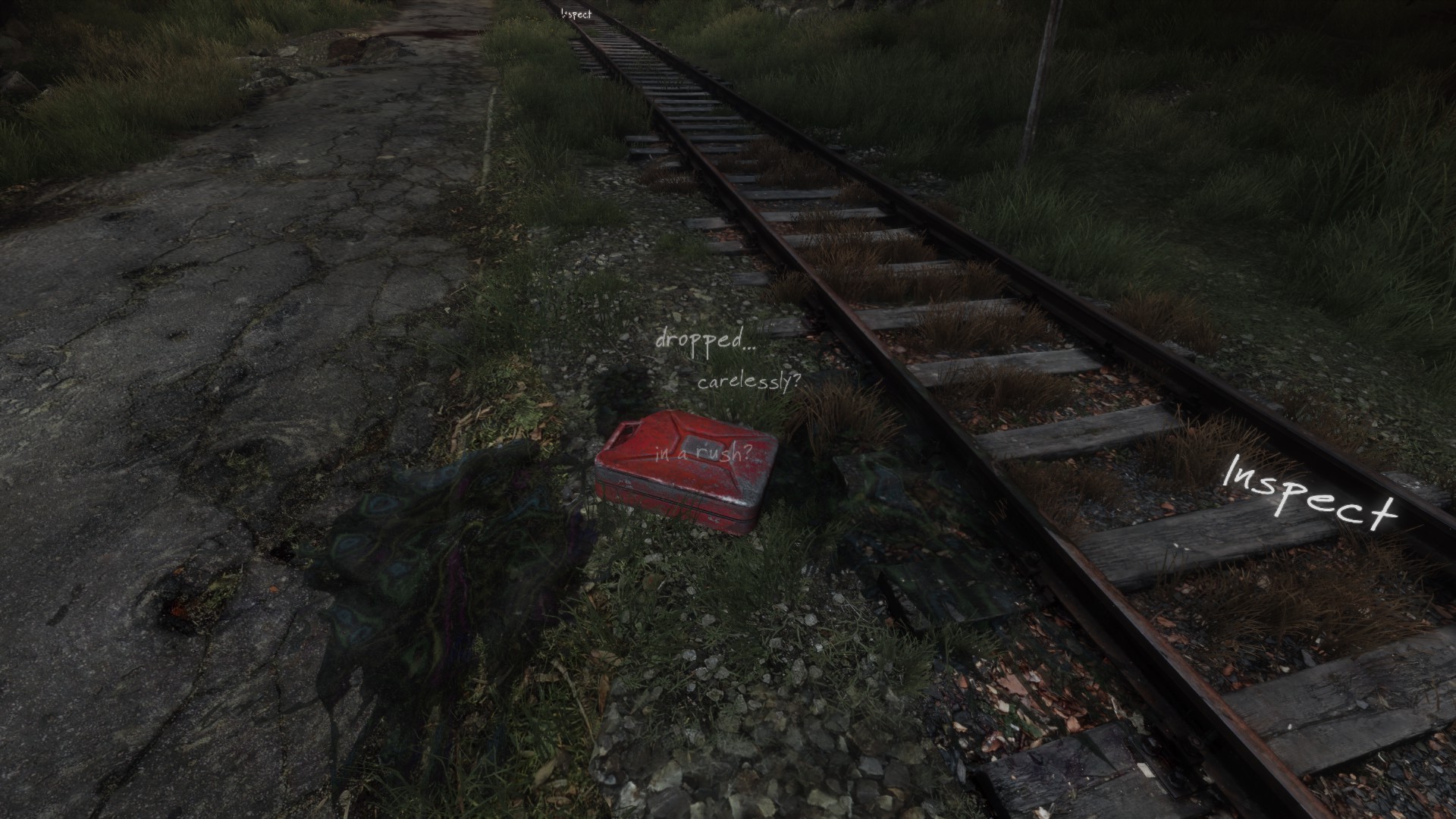First-person narrative-heavy exploration games are usually blunt instruments, and that’s okay. Fans remember Myst as a fantastic world full of secrets–not a game crammed full of infuriating puzzles that most of us needed strategy guides to solve. What counts is the feeling of freedom against the unknown. When this hazy genre convinces players that an uneasy truce exists between their actions and a narrative, exploration feels real because it is.
With a few heavy-handed exceptions, The Vanishing of Ethan Carter treads this line perfectly.
At its beginning, the player is given a warning: “This game is a narrative experience that does not hold your hand.” There are no tutorials or hints as to how your supernatural powers work or how to complete puzzles if you’re stuck. The forest feels huge, and you will stop at scenic vistas to gawk, impressed by how far you’ve come. You’ll probably get turned around and lost. Puzzles can be done out of order. If you see an interesting, far off place, you can probably just go there whenever you want.
Despite all of that, the game’s disclaimer is mostly a smokescreen. Its excellent art direction always lead me from one segment to another without much room for confusion. Its use of lighting and shadows is subdued, but if you’re paying attention and have played many video games, the way ahead is usually obvious. It is not a “hardcore” adventure game, but it does expect players to pay attention.
None of this should discourage exploration, because the scenery is gorgeous. It is one of the most beautiful games ever made. The foliage is convincing, and graphical effects are subdued but purposeful. Looking off into the distance and seeing a house instead of a smudged LOD texture feels amazing. You’ll wish Skyrim looked this pretty. Seriously. The screenshots don’t do it justice.
Its abstract puzzles provide enough challenge for “Aha!” moments, and they don’t rely on sliding tiles or inventory combinations. At its best moments, the way forward feels natural, and your detective powers lend to this without feeling too arbitrary. Red Creek Valley is a menacing place, but the game wants the player to enjoy their explorations. The result is creepy and atmospheric, but rarely full-on scary.
The story is best left unstated because spoilers, but what you need to know is right there on the tin. The game’s script is fairly short, and since its plot is tied to puzzles, the story can largely be seen out of order. As with the rest of the game, it expects a player who can fill in blanks.
So. Should you buy it right now on Steam for $20? I did, and I’m happy with that, even if it only lasted for just shy of five hours. But will you like it?
“Walking simulators”–a title conceived by jeering detractors that has somewhat become a badge of honor–can be likened to booze. The Stanley Parable is a good craft beer; it’s fun, unpretentious, and anyone who doesn’t like it is a little suspect. Gone Home is a $7 Nordeast at a punk show; it’s pretty alright on its own, but what really sells it is the vibe, and you had to be there. Dear Esther is the weird liqueur your uncle gave you.
The Vanishing of Ethan Carter is expensive wine. From package to use, someone thought very hard about its creation. Everything about it is a little special. It’s extremely good, but it makes certain assumptions about its player’s palette. It wants you to appreciate its gorgeous wrapping, subdued script, and stern suggestions. In some ways, it wants to trick you into having an experience larger than it can honestly offer.
If you’ve played games like it and enjoy some light puzzling with a gorgeous view, I’d suggest you dive in and let yourself be fooled.



Leave a Reply